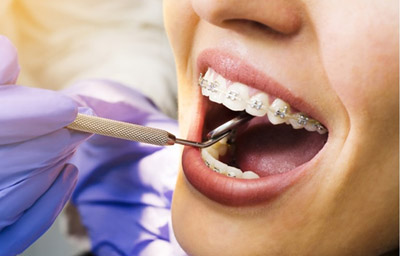The Causey Orthodontics Ideas
Facts About Causey Orthodontics Revealed
Table of Contents6 Easy Facts About Causey Orthodontics ExplainedA Biased View of Causey OrthodonticsThe Definitive Guide for Causey OrthodonticsCausey Orthodontics - QuestionsThe Single Strategy To Use For Causey Orthodontics
Disregarding occlusal relationships, it was common to remove teeth for a variety of oral problems, such as malalignment or congestion. The concept of an undamaged dentition was not extensively valued in those days, making bite correlations seem unnecessary. In the late 1800s, the idea of occlusion was vital for producing reputable prosthetic replacement teeth.As these concepts of prosthetic occlusion progressed, it ended up being a very useful device for dental care. It was in 1890 that the job and effect of Dr. Edwards H. Angle started to be felt, with his payment to modern orthodontics specifically notable. Originally concentrated on prosthodontics, he educated in Pennsylvania and Minnesota before routing his interest in the direction of dental occlusion and the treatments required to keep it as a typical problem, therefore becoming referred to as the "father of contemporary orthodontics".

The concept of perfect occlusion, as postulated by Angle and included into a category system, allowed a shift towards dealing with malocclusion, which is any kind of inconsistency from regular occlusion. Having a full set of teeth on both arcs was extremely searched for in orthodontic therapy due to the need for specific connections between them.
The Facts About Causey Orthodontics Revealed
As occlusion came to be the vital top priority, face proportions and appearances were overlooked - orthodontist expert. To achieve excellent occlusals without utilizing external forces, Angle proposed that having perfect occlusion was the finest means to acquire maximum face aesthetics. With the passing away of time, it ended up being rather evident that even a remarkable occlusion was not ideal when taken into consideration from a visual perspective
Charles Tweed in America and Raymond Begg in Australia (that both studied under Angle) re-introduced dental care extraction right into orthodontics throughout the 1940s and 1950s so they could boost face esthetics while additionally making certain better stability worrying occlusal relationships. In the postwar period, cephalometric radiography started to be used by orthodontists for gauging changes in tooth and jaw position triggered by growth and therapy. It came to be evident that orthodontic therapy might change mandibular growth, causing the formation of useful jaw orthopedics in Europe and extraoral force procedures in the United States. Nowadays, both functional devices and extraoral devices are applied around the world with the purpose of amending development patterns and forms. Consequently, pursuing real, or at least improved, jaw connections had actually come to be the primary purpose of treatment by the mid-20th century.
A Biased View of Causey Orthodontics
 The American Journal of Orthodontics was developed for this objective in 1915; before it, there were no scientific objectives to comply with, nor any accurate category system and braces that did not have attributes. Until the mid-1970s, dental braces were made by wrapping metal around each tooth. With innovations in adhesives, it became feasible to instead bond metal brackets to the teeth.
The American Journal of Orthodontics was developed for this objective in 1915; before it, there were no scientific objectives to comply with, nor any accurate category system and braces that did not have attributes. Until the mid-1970s, dental braces were made by wrapping metal around each tooth. With innovations in adhesives, it became feasible to instead bond metal brackets to the teeth.Andrews gave an insightful definition of the perfect occlusion in permanent teeth. This has had significant impacts on orthodontic treatments that are administered frequently, and these are: 1. Correct interarchal connections 2. Right crown angulation (pointer) 3. Proper crown disposition (torque) 4. No turnings 5. Tight contact factors 6. Flat Curve of Spee (0.02.5 mm), and based upon these concepts, he found a therapy system called the straight-wire home appliance system, or the pre-adjusted edgewise system.
The advantage of the design depends on its brace and archwire combination, which needs only very little cable flexing from the orthodontist or clinician (Causey Orthodontics). It's appropriately called hereafter attribute: the angle of the port and thickness of the bracket base ultimately determine where each tooth is positioned with little demand for extra control
Causey Orthodontics Fundamentals Explained
Both of these systems utilized similar brackets for each tooth and necessitated the flexing of an archwire in 3 aircrafts for situating teeth in their desired placements, with these bends determining supreme placements. When it pertains to orthodontic home appliances, they are split right into 2 kinds: detachable and taken care of. Removable devices can be tackled and off by the patient as required.

Thus, nearly all modern set devices can be taken into consideration variants on this edgewise home appliance system. Early 20th-century orthodontist Edward Angle made a major payment to the globe of dentistry. He developed 4 unique device systems that have actually been made use of as the basis for many orthodontic therapies today, barring a few exemptions.
Everything about Causey Orthodontics

The wire ended in a thread, and to move it onward, a flexible nut was used, which permitted an increase in circumference. By ligation, each individual tooth was affixed to this extensive archwire (best orthodontist). As a result of its minimal variety of movement, Angle was not able to achieve precise tooth positioning with an E-arch
These tubes held a firm pin, which can be rearranged at each visit in order to relocate them in position. Called the "bone-growing home appliance", this gizmo was supposed to urge much healthier bone growth because of its possibility for transferring pressure straight to the roots. However, implementing it verified bothersome in fact.